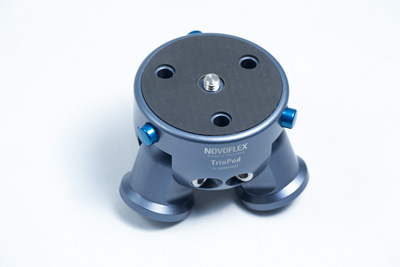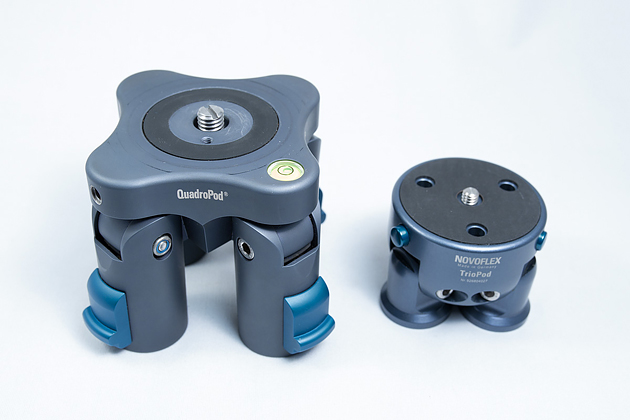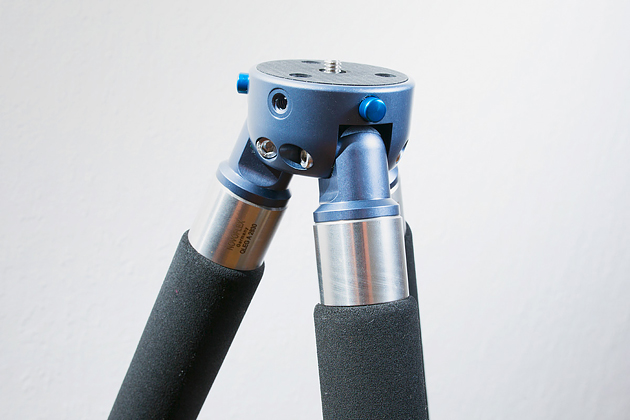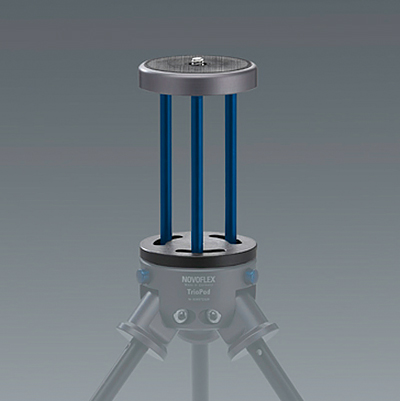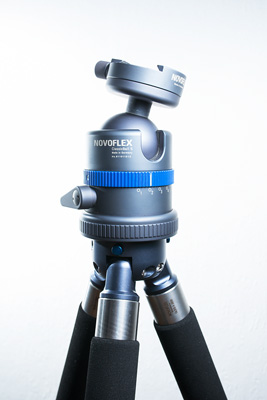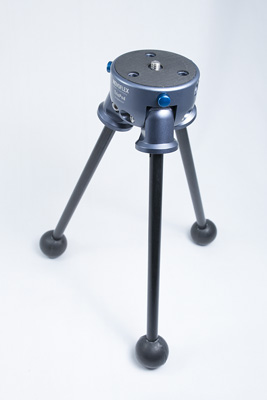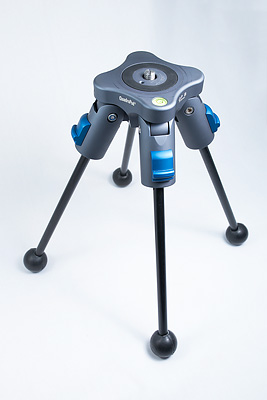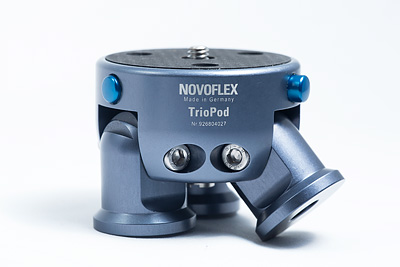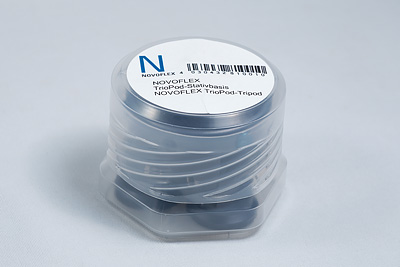equipment reviews
novoflex triopod
Triopod is the most recent creation of Novoflex — a German manufacturer of high-end supports for photo cameras and accessories. It was released in November 2013 — just a couple of weeks before I wrote this review. Triopod belongs to the highly expandable and configurable Quadropod system that was subject of my other review in February, 2011 — see: Novoflex Quadropod. In brief: Quadropod is a set of bases, legs and clamps, etc., that you can combine to match your specific needs for a camera support. It has many advantages over a classic tripod but also some disadvantages. I discussed both in my above mentioned review.
Quadropod was originally designed as the worldwide only 4-legged camera support. Since 2010 Novoflex has been offering 3 models of 4-leg bases and 6 different types of legs. Three years ago I purchased a QP B base — that is the lightest and has the lowest minimal working height, hence is better suitable for near-ground work.
Overall, a Quadropod base is more suitable for heavy gear. The QP B, particularly with normal, aluminium or carbon legs, or with short legs attached is very sturdy. However, when LEKI hiking poles are attached, it is much more shaking and vibrating. Anyway, the construction looks massive and is quite heavy. When used with lightweight gear, the “classic” Quadropod is definitely an overkill, particularly if you carry it at long distances.
Triopod is a “mini” base for the Quadropod system that can be used with the same legs. Not four, but only three of them can be attached to it, and it results in a construction that is similar to usual tripod. Such tripod is much lighter, smaller and can be set up somewhat quicker. In the picture below Triopod is shown together with QP B for comparison.
As you see, Triopod looks very small even compared with the smallest Quadropod base. The table below shows weight and working height when Triopod and QP B are combined with different legs.
| Triopod | QP B | |||
| Weight (g) | ||||
| without legs | 315 | 860 | ||
| with 3-segments aluminium legs | 1800 | 2780 | ||
| with 4-segments aluminium legs | 1900 | 2900 | ||
| with 3-segments carbon legs | 1500 | 2460 | ||
| with 4-segments carbon legs | 1600 | 2560 | ||
| with short legs | 535 | 1080 | ||
| with trekking poles as legs | 1060 | 1940 | ||
| Working height (cm) | ||||
| with 3-segments aluminium legs | 6.5 - 151 | 10 – 155 | ||
| with 4-segments aluminium legs | 6.5 - 151 | 10 – 155 | ||
| with 3-segments carbon legs | 6.5 - 151 | 10 – 155 | ||
| with 4-segments carbon legs | 6.5 - 151 | 10 – 155 | ||
| with short legs | 6.5 - 25 | 7 - 26 | ||
| with walking sticks as legs | 6.5 - 144 | 10 - 145 | ||
Triopod is almost three times lighter than QP B, and, since only three legs are used, every combination of legs with Triopod has almost half the weight of a corresponding setup with QP B. Nonetheless, the maximum height of supports is almost the same with both bases.
The functionality of Triopod improves even further when it is used with an optional platform on three sticks that serves the same purpose as a centre column in a tripod. Novoflex even calls it “center column” although it is a pretty unique construction. Triopod has three holes through which the sticks move and can be fixated with a screw at any length. When they are completely extracted, the overall working height of the tripod increases by additional 8cm. With normal — aluminium or carbon fibre — legs the support is then almost 160 cm high, i.e. even higher than Quadropod. Of course, it also adds some weight, but not much — only 140g.
With such a centre column, the working height of the camera can be quickly adjusted though not as far as in usual tripods whose columns are much longer. It is very practical for landscape photography, but may be disturbing when a very low camera position is required. Then the platform on sticks has to be removed and the head has to be mounted directly onto the Triopod. This is inconvenient but is nothing that would be specific to Triopod because also in other tripods centre columns need to be removed for ground level work. Since it is to expect that the centre column will be attached or removed now and then during shooting, I had wished a quicker attachement mechanism than the simple 1/4 screw as currently in Triopod.
As with other Qauadropod components, the manufacturer doesn't provide information about load capacity. I mentioned this already in the review of Novoflex Quadropod: My subjective estimation is that this construction can support up to 20kg if a good head is used. It may be much more when short (macro) legs are used. However, when the normal legs or trekking poles are extended at full length, the support becomes more shaky and strong vibrations may occur. Carbon fibre legs may help to reduce this.
I am going to use the Triopod mainly with Novoflex Classic Ball 5 (that I also reviewed some time ago — Novoflex Classic Ball 5) because it is the same head that I use with the QB P base. Since the Triopod is much smaller, the CB 5 looks huge on it but sits firmly. Particularly when full-sized legs are used — as in the picture on the right — the construction feels very solid.
Of course, a large head like CB 5 contributes very much to the overall weight of such a tripod that will increase to 1-2.5kg. Who wants it to be less, can use a smaller head, such as Classic Ball 3 or Magic Ball, or similar tripod heads of other manufacturers.
Like in all tripods, the tilt angle of the legs is adjustable, and can be fixated in three positions. Three blue buttons at the sides of Triopod, above leg sockets serve the same purpose as the blue sliding knobs in Quadropod bases. When the socket is bended, the button extrudes. After that, to move the leg further up, you need to push the button.
Unfortunately there is an issue in Triopod that really drives me mad sometimes are legs that get unscrewed from the base when you are rotating the segment locks to adjust the length of a leg. Exchangeable legs is the best feature of Quadropod that made me buy it, but the attachement mechanism of the legs — by simple screwing the leg into a socket — is just awful. This is extremely annoying. I criticised this already in my Novoflex Quadropod review and was hoping for an improvement in new releases of Quadropod components, but with Triopod it didn't happen yet.
